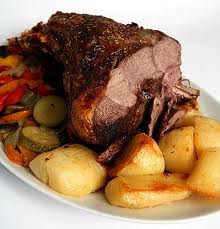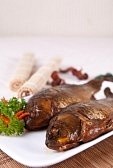This entry is care of my friend, Paul Goldstein, who, every so often ventures to Thailand so he can get away from the damp and wet of a Seattle winter. He e-mailed me about this recipe, if it can be called that. He was dining was at a small restaurant in Bangkok “around the corner from the Grand Palace and art school” in that city when he came upon this dish. Basically, it’s dry teriyaki chicken without the sauce. Add a scoop of white rice and a pile of sliced white ginger, and there you have it. Pablo states that an interesting addition is sweet chili sauce. He does caution that the dish is “not for everyone.” But, it’s worth a try. The only drawback: white ginger may be hard to get in your area; so just substitute regular ginger. The heart of this simple dish remains the same.
CHICKEN WITHOUT THE TERIYAKI
2 pieces chicken thighs
1 1/2 cups water
2 cups steamed white rice
1 piece fresh ginger (about the size of your thumb), peeled and grated
Sweet chili sauce, optional
1. Wash chicken pieces under cold running water and pat dry with paper towels.
2. Place chicken in pot or pan with water. Bring to a boil, cover and simmer on low heat for 15-20 minutes until chicken thighs are tender.
3. Place a scoop of rice on a plate. Place a chicken thigh on top.
4. Spread some grated ginger on chicken and rice. Serve with sweet chili sauce, if desired.
Yield: 2 servings.
Note: If you desire, instead of boiling the chicken pieces, you can cook them in one tablespoon of oil over medium high heat until done (about 5-7 minutes). Then serve with rice and ginger, as noted. This is for those who prefer fried chicken instead of boiled chicken.



















